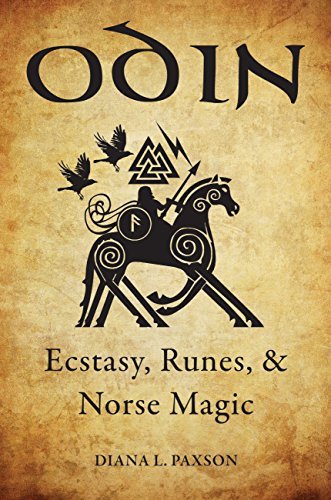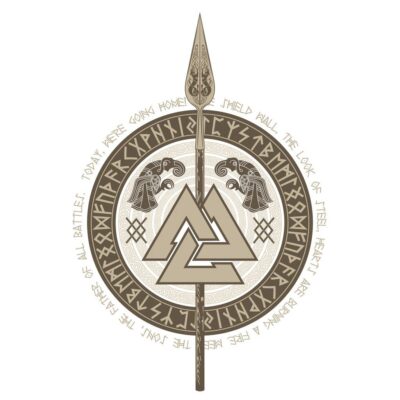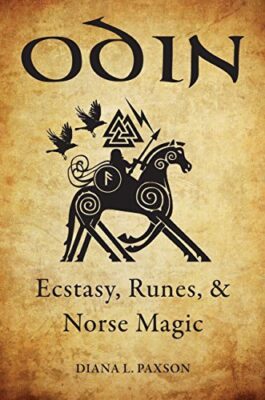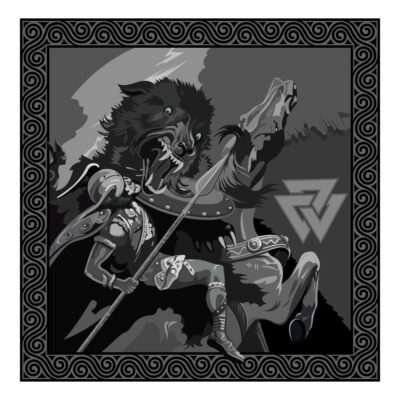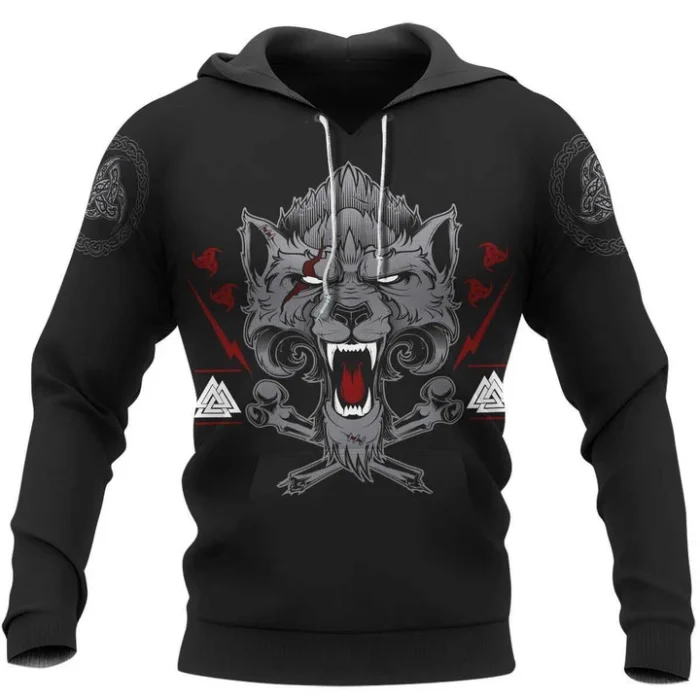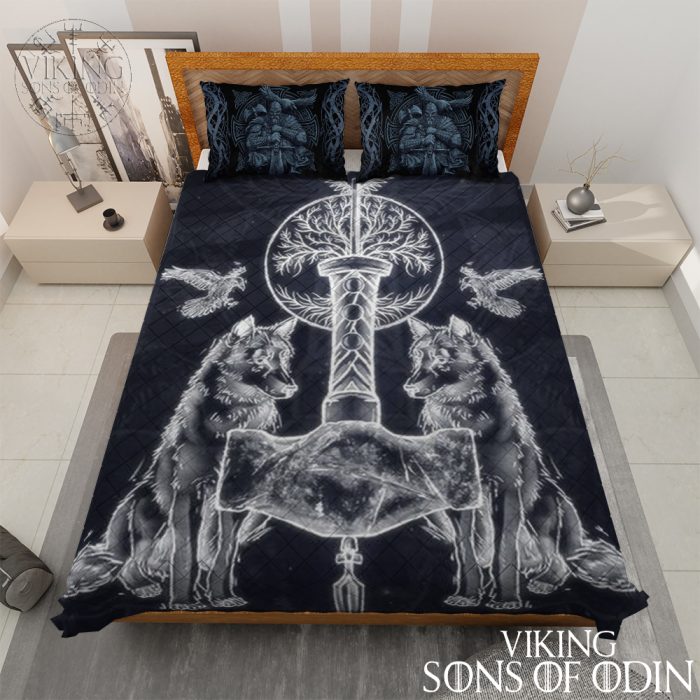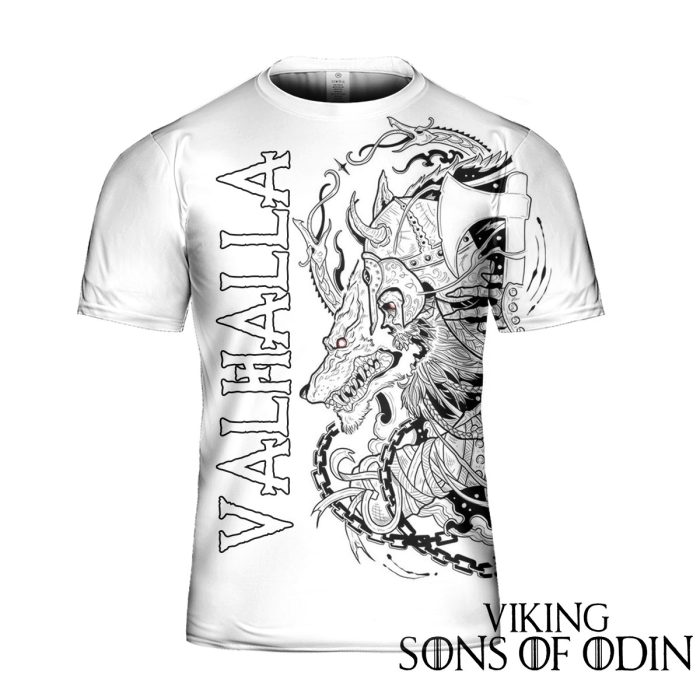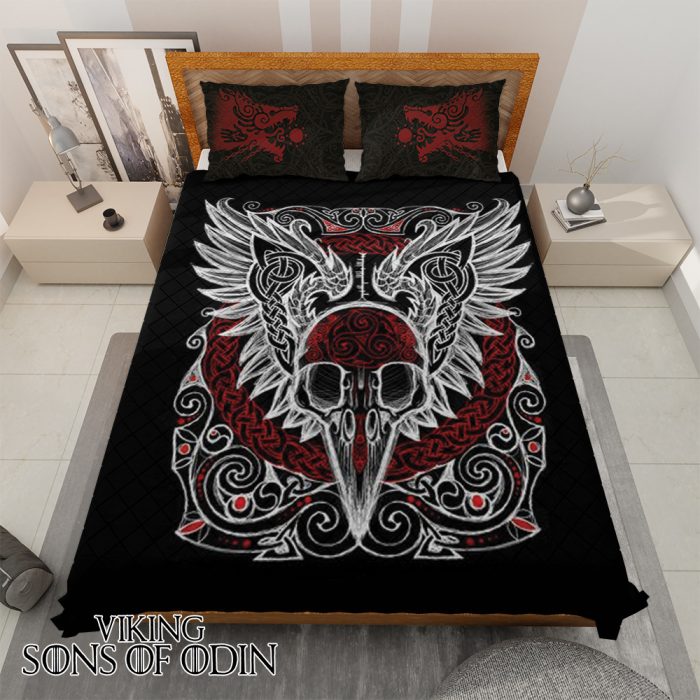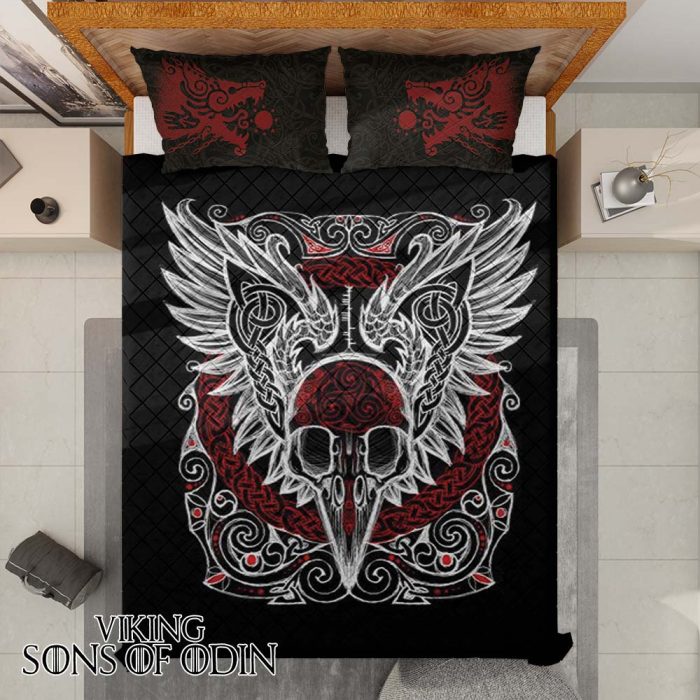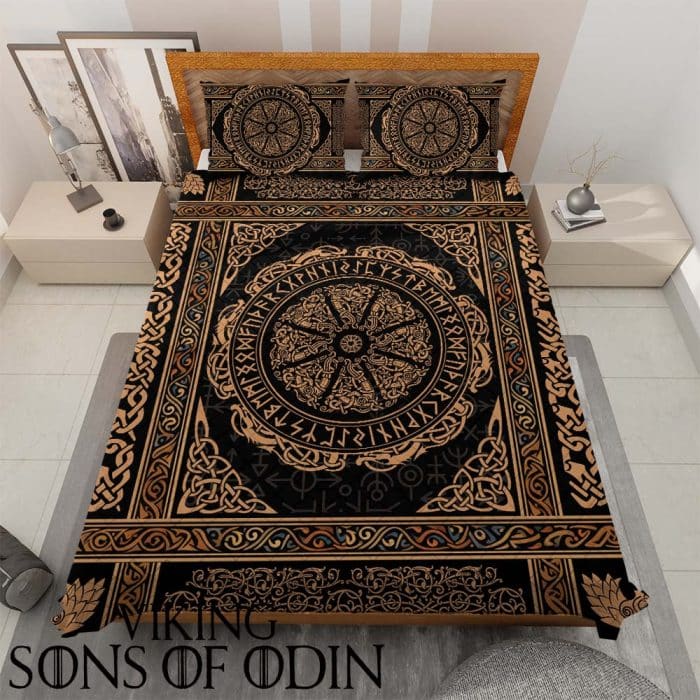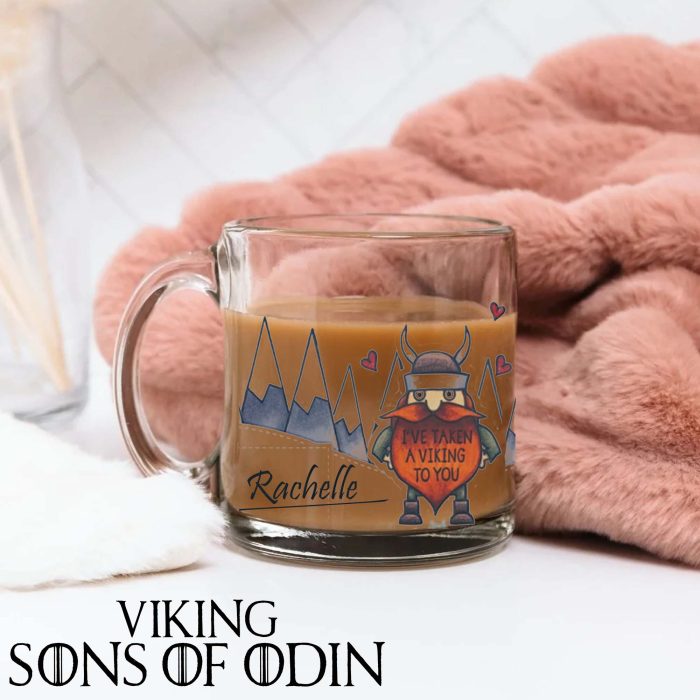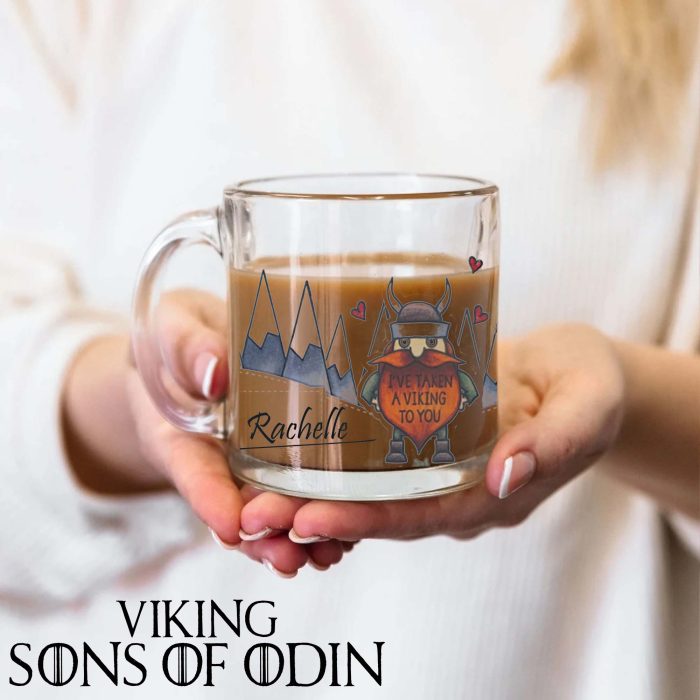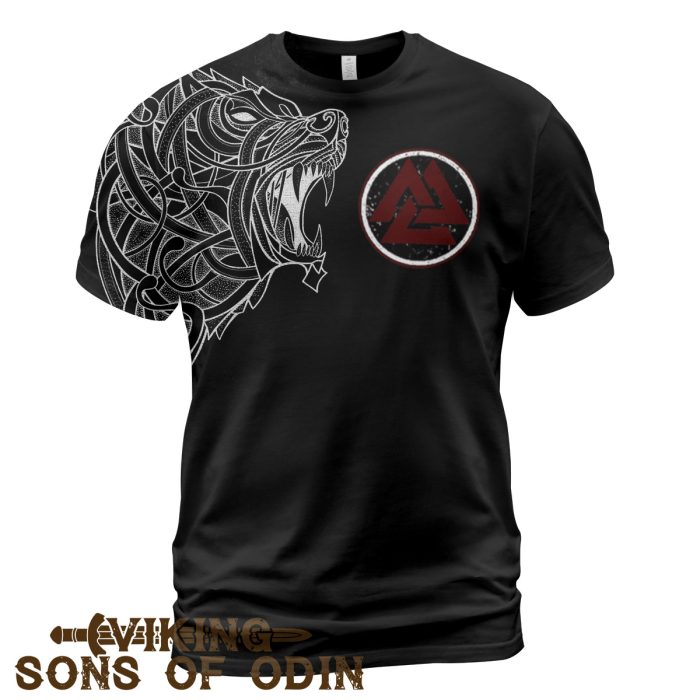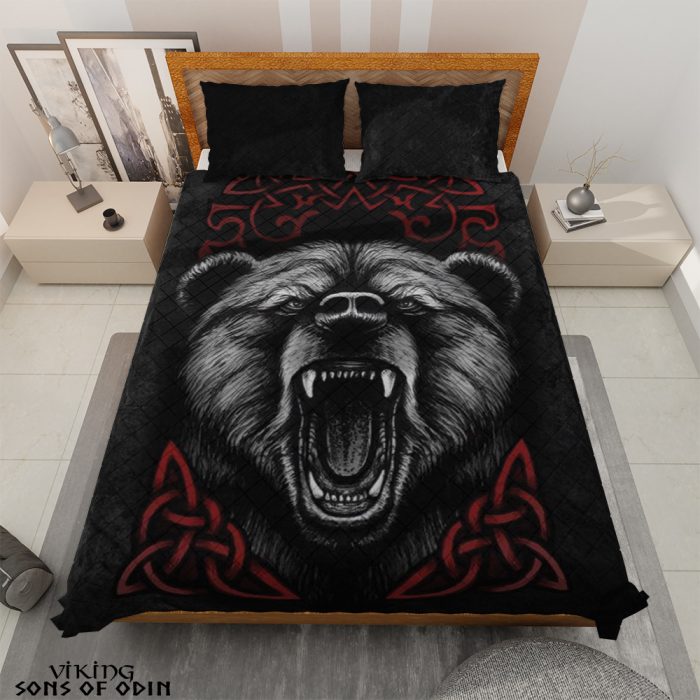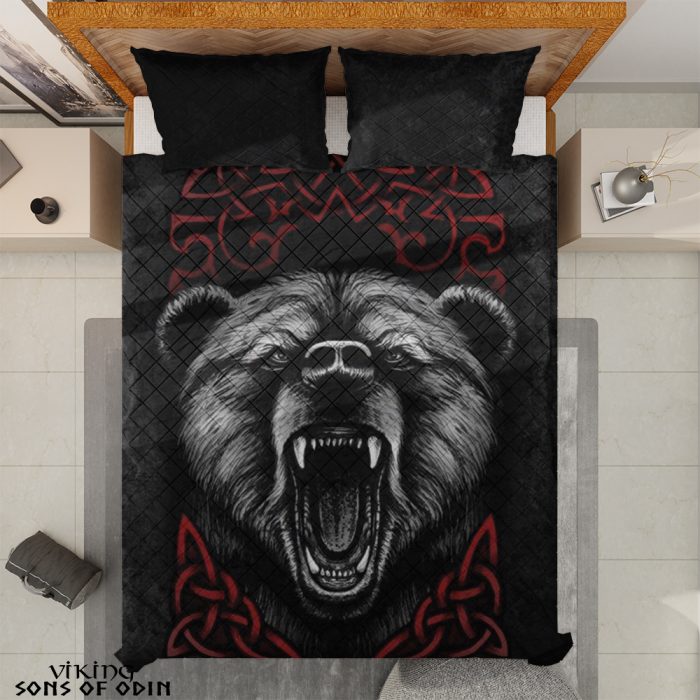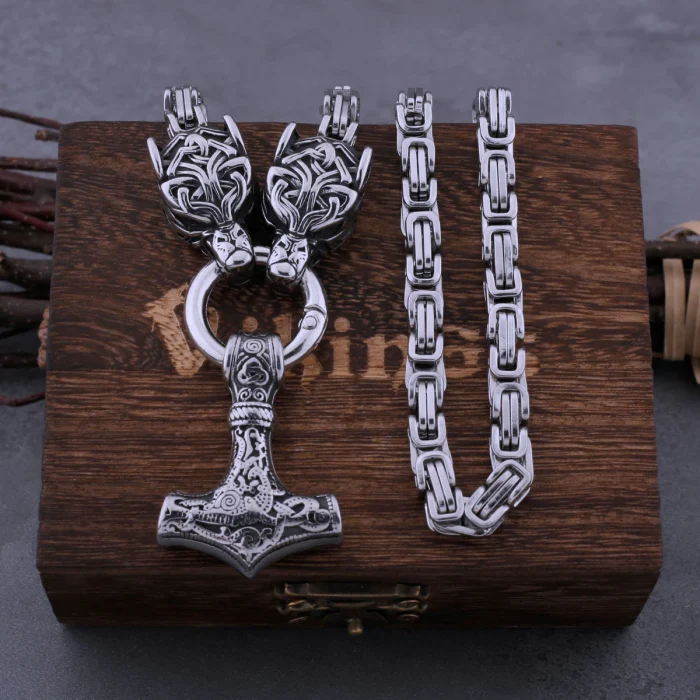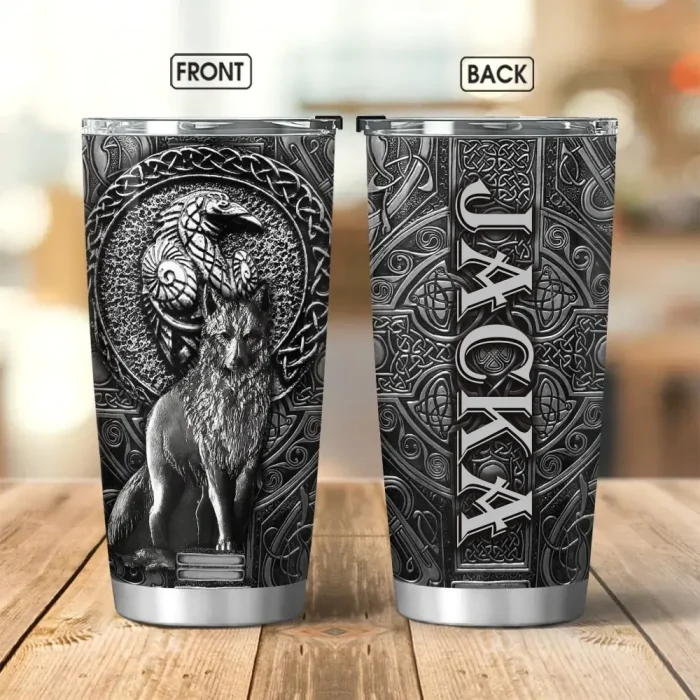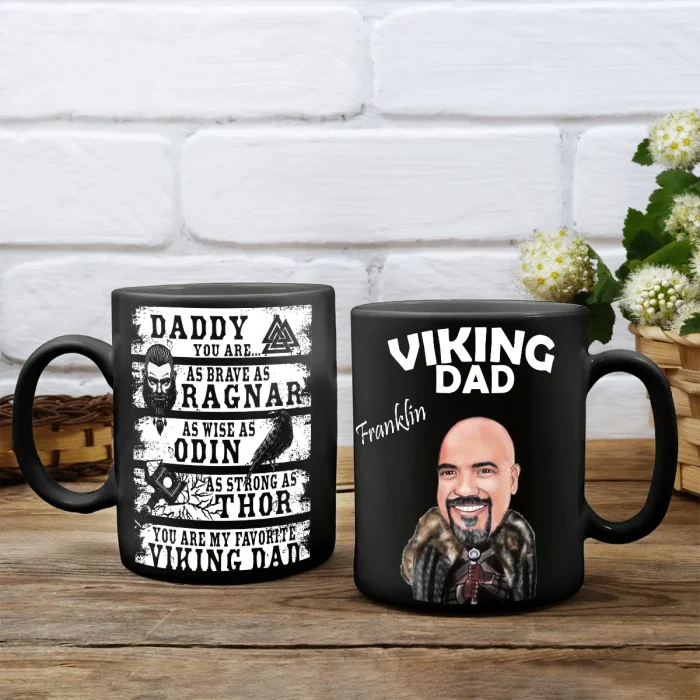Viking
Odin The Wanderer
Finally, the time has come to write about a Norse God that many of you (if not all) love the most of all Gods in Nose Mythology. He is Thor’s father and is also known as the All-father of Gods. Of course, this article is about Odin, the King of Asgard.
Odin (Old Norse: Óðinn) is the ruler of Asgard, the realm of the Gods. He is also the main God in Norse universe. Odin also has a place in Germanic mythology where he is known as Wutan (in Old High German), Woden (in Old English), and Wodan (in Old Franconian).
Odin has by far the most different attributes than any other God within the Norse pantheon. Often portrayed as one-eyed wonderer who is the wisest of all Norse Gods, it was believed that Odin was a god of war, poetry, runes, magic, and the dead. The raven and the wolf symbols were dedicated to Odin because of his faithful companions. Furthermore, the All-father has a horse like no other and owns some of the most powerful artifacts in the Norse universe.
He is a member of the Aesir tribe of Gods, he created the world as we know it with his two brothers, and he rules from Asgard (the home realm of the Gods). He chooses the most fierce fallen Viking warriors to join him at his great Hall, Valhalla, to fight at his side when Ragnarök begins. However, even though the All-father might seem invincible to you, he was destined to meet his demise during the final battle, which will bring upon the destruction of the whole Norse universe.
But, just like in the previous articles, let us not get ahead of ourselves, and start from the very beginning, as Odin deserves his story to be told in the right way.=
Check out our Odin themed viking bracelets.
ODIN’S HOME AND FAMILY
Odin lives in a Hall called Valaskjálf (meaning “the Shelf of the Slain”). It is a building of immense beauty, roofed with pure silver. Within his house is a tower, and at the top of it lies his throne, Hlidskjalf (Old Norse Hliðskjálf). From his throne, Odin could look into all realms of Norse universe. This place was so important to the All-father that no one was allowed to enter Odin’s tower without his permission, except for his wife, Frigg.
Now, let’s say a few words about Odin’s ancestors and his family.
Odin’s grandfather is the first Aesir, Buri. Odin’s father is one of the first Asgardianns, Bor, and his mother is a giantess Bestla. Odin has two brothers, Ve and Vili. The three of them created the Norse universe as we know it today.
Odin’s wife is one of the most beautiful Goddesses, Frigg, the Goddess of the sky, and the Queen of the Aesir Gods. Together they have twins, Baldr and Hodr. However, Odin had other sons as well. Some giantesses living within the realm of Jotunheim were so beautiful that even the All-father himself was not able to resist them. So on many occasions, Odin went to Jotunheim to be with those beautiful jötunn.
As a result, Odin had many sons, but we will mention only a few of the most important ones. Of course, the most famous son of Odin is the God of Thunder, Thor, who he had with the giantess Jörð. The giantess Rind gave him a son Vali, and with a giantess Grid, he had a son Vidar.
ODIN’S APPEARANCE AND TREASURES
Odin’s Appearance
Odin is mostly portrayed as an old-man with only one-eye and a long beard, usually wearing a hat and a cloak, holding his spear, Gungnir, in his hands. It is believed that Odin’s spear was a part of Viking age beliefs, as there are many findings of small spearheads throughout Sweden. Another item of incredible power owned by the All-father was a piece of viking jewelry, the ring Draupnir.
Furthermore, Odin is often showed with some of his faithful animal companions. He rides an eight-legged steed called Sleipnir. His two ravens. Muninn and Huginn fly around the nine realms gathering news and whispering their finding while standing on their favorite spot, Odin’s shoulders. While in Asgard, Odin is usually accompanied by Geri and Freki, his two wolves.
Last but not least are Valkyries. They are quite often connected to the All-father, and are usually showed as female warriors who were tasked with bringing the fallen Vikings chosen by Odin back to Valhalla.
ODIN’S SPEAR – GUNGNIR
The Spear Of The God Odin – Gungnir
Gungnir (meaning “Swaying”) was the spear of incredible power that belonged to Odin.
Of course, Gungnir is not just any spear, it is the weapon of God after all. There are two stories regarding the origins of the spear. What both versions got in common is that the spear was forged by the most skilled craftsmen in the Norse universe, the dwarves.
The first story tells that the spear was explicitly made for Odin and that it was forged from the sunlight. On the other hand, the second version says that Loki was the one to obtain Gungnir together with Mjöllnir and Gullinbursti. He did it while on his quest to forge a new thread of golden hair for Thor’s wife in order to save his life.
When Loki gave the spear to Odin, he told him that Gungnir was so well crafted that it can never miss its target and that oaths that are sworn on it can never be broken.
In any case, it is also believed that the spear had runes carved in it, which magically increased its deadliness and aim.
During the war between the Aesir and the Vanir tribes, Odin started a battle by throwing his spear with a battle cry: “Odin owns you all!” (Old Norse “Óðinn á yðr alla!”). This gesture was often repeated by Vikings, hoping that Odin will grant them victory in the ensuing battle.
ODIN’S HORSE – SLEIPNIR
Sleipnir (Old Norse “The Slipper” or “Slippy”) is the best and the most beautiful of all steeds within the Norse universe. What makes it even more unique is that Sleipnir had eight legs and could ride both through the air and over the water. Odin often rides Sleipnir on his travels across the nine realms, which are held firmly between the roots and branches of Yggdrasil, the World Tree.
Just like Odin’s spear and ring, his horse was a gift from Loki as well. During the construction of the impenetrable wall that surrounds Asgard, Loki convinced the Gods to accept the terms of the builder, the giant named Hrimthurs.
As the giant was going to finish his work on time, the Gods tasked Loki to sabotage the construction. Loki shapeshifted into a mare and seduced giant’s horse, Svaðilfari, who has been of great help during the building of the wall. Eventually, Svaðilfari completely abandoned its construction tasks, and the wall was not built on time. However, in the meantime, Svaðilfari had intercourse with Loki, who later gave birth to Sleipnir and gifted it to the All-father.
ODIN’S RAVENS – MUNINN AND HUGINN
Odin’s Ravens Huginn and Muninn
Odin’s ravens are called Huginn (Old Norse “thought”) and Muninn (Old Norse “mind” or “memory”). Each morning, Odin sends them on a quest to fly around the world and gather important news. They would return in the evening and whisper to the All-father about their findings. At times they are not out exploring the world, the ravens sit on Odin’s shoulders while he rules from his throne in Asgard.
Because of Huginn and Muninn, Odin is also often referred to as “the raven God.” This comes from a connection of Odin being a God of war and a battlefield becoming a feast for the ravens after the battle is over.
There are also many findings of ancient Viking jewelry featuring Odin’s ravens.
ODIN’S WOLVES – GERI AND FREKI
Before Odin created mankind, he often wondered on his own feeling lonely. This is why the All-father has brought to life two wolves, Geri (meaning “the ravenous”) and Freki (meaning “greedy one”), to keep him company.
The wolves rarely left their master’s side. They sat beside Odin at his throne and at Valhalla and followed him around Asgard. At times when one of the wolves was sleeping, the other was always awake. Therefore, it was not possible to surprise the most powerful Norse God and the ruler of Asgard.
The wolves were Odin’s personal guardians, often patrolling the borders of Asgard, keeping the realm of the Gods safe. Both Geri and Freki particularly enjoyed their time at Valhalla, as Odin would toss his food to them as he didn’t need to eat to live.
ODIN’S RING – DRAUPNIR
Odin’s magical golden ring is called Draupnir (Old Norse “the dripper”). The ring had the power to create eight new golden rings of the same size and shape every ninth day. It is a symbol of abundance, as Odin was a God of abundance after all.
Draupnir was forged by some of the most skilled craftsmen in the Norse universe, the dwarf brothers Brokkr, and Eitri. The ring was forged together with Thor’s hammer, Mjölnir, and the magic boar Gullinbursti as a part of a bargain with Loki, and was eventually gifted to Odin.
When Baldr, a son of Odin and the most loved of all Norse Gods died, Odin placed his magical ring on the ship carrying his son to the afterlife. At that time, Odin knew that Ragnarök is coming, and nothing can stop it, as Baldr’s death was the first sign of the final battle.
It is believed that Odin’s gesture of placing Draupnir on Baldr’s pyre ship had two meanings. Firstly, it was a sacrifice to the funeral worthy of a God like Baldr. Secondly, it represents Odin’s belief that a new world will emerge after Ragnarök and that Baldr would rise to become the new king who would lead the creation of the new world.
THE MOST FAMOUS MYTHS ABOUT ODIN
ODIN’S ROLE IN CREATION OF THE WORLD – THE ORIGIN MYTH
As we have already mentioned, Odin had two brothers, Vili and Ve. The three of them killed Ymir and created the world from his corpse. In short, Ymir’s blood became the lakes and seas, his bones the mountains, and his flesh the earth.
Once the brothers finished with assembling the Norse universe, they brought to life the first humans, Embla (the women) and Ask (the man). Odin was tasked with the most delicate matter, imbuing the humankind with life and spirit. Meanwhile, Ve and Vili gave humans the capability of understanding and the ability to move along with their names and clothing. Odin became known as the Giver of Life due to his role in the creation of the Norse universe.
WAS ODIN ACTUALLY A MAN?
Even though the origin myth lives on, there are certain beliefs that Odin was nothing more than a human. But, not a common one.
According to these believes, Odin was a famous warrior so great and admired that he eventually became worshiped as a God. As his myth kept growing, he finally usurped Tyr as the principal God, both in religion and in myth. Is this true or not? Truth to be told, we don’t know, but in case this was true, Odin must have been one hell of a warrior!
HOW ODIN LOST HIS EYE IN PURSUIT OF WISDOM
Odin does not belong to the group of all-knowing Gods, on the contrary, he is always in pursuit of wisdom. His everlasting desire to seek knowledge comes at a great price, as we will now see.
The most famous of all myths surrounding Odin is the one telling about how he lost his eye while seeking wisdom. The All-father went to the Well of Urd as he learned that its waters contained greater knowledge. Upon his arrival at the well, he came across Mimir, the wise guardian of the Well of Urd.
Straight away, Odin asked for a sip of water from the well, but the guardian knew the value of such a gift. Mimir was not willing to simply give Odin a chance to acquire great wisdom without a certain price. Great wisdom comes at a great cost, as you will see.
To allow Odin to drink from the well, the guardian asked the All-father to sacrifice an eye. Odin agreed to Mimir’s terms and took his eye out. As a result, he was allowed to drink from the Well. In the end, Odin spent the rest of his life with one eye, but also with unmatched wisdom.
ODIN AND THE DISCOVERY OF THE RUNES
Discovery of the Runes
Another famous myth that tells about Odin’s continuing pursuit of wisdom is how he discovered the runes. Nowadays, we think of the runes as an ancient form of writing, but back in the Viking era, they were far more than that. It was believed that the runes contained the secrets to greater knowledge and even the meaning of life. Here is the short version of the tale:
At the very center of the universe lies the Norse Tree of Life, Yggdrasil. The tree grows from the mysterious depths of the Well of Urd (which we have mentioned earlier). Three powerful maidens known as Norns tended to Yggdrasil since the beginning of time. The Norns dictate the destiny of the Norse universe by carving the magic runes into the trunk of the Tree of Life.
From his high throne, Odin could see what Norns were doing, but was not able to understand the meaning of the runes. His desire to be able to discern the runes was continually growing, so he decided to go on a journey of discovering the meaning of these powerful magic runes.
Odin knew that the runes will only reveal themselves to those who prove worthy. Therefore, Odin pierced himself with his spear Gungnir, forbid other Gods to help him, and hung himself from Yggdrasil.
Odin kept looking at the runes for nine days and nine nights, thus proving that he was worthy of their secrets. At the end of the ninth night, the runes showed themselves to Odin, and so he beheld their secrets. This was the moment in history when Odin became God as we know him today, wielding many tremendous magical powers.
ODIN AND THE MEAD OF POETRY
Odin liked to speak in poems, and it is believed that he was the one who gave poetry to mankind. He did it after stealing and drinking the Mead of Poetry, and trust us when we say that stealing the mead was quite an adventure.
There was more about this mead than just poetry. Alongside poetry, Odin acquired the ability to persuade and inspire others after drinking the mead. Here is a short version of the story, telling how Odin stole the Mead of Poetry.
There are two tribes of Gods in the Norse universe, the Aesir and the Vanir. Throughout history, the two groups fought from time to time. Following a certain battle, they made a truce, sealing it by spitting into a drum. A being called Kvasir was born from the spit of the Gods. Kvasir became very wise and wondered the universe giving free counsel and advice to those who needed it.
After some time, two dwarves, Galar and Fjalar, invited Kvasir to their home. Once Kvasir got there, the dwarves killed him and used his blood to make mead. This magical mead contained Kvasir’s power to provide inspiration and wisdom. Anyone who drank it would acquire these powerful gifts.
Galar and Fjalar got themselves into a situation where they had to give the mead to Suttung, a giant who hid the mead under the mountain. Odin knew where the mead was hidden, but he didn’t know how to enter the mountain. Odin wanted the mead, and so he set upon another adventure in pursuit of wisdom.
Odin started by going to a farm belonging to Suttung’s brother, Baugi. Disguised as a farmhand, Odin tricked the nine servants who were working on the farm to kill each other. The All-father then offered Baugi to do all the work at the farm by himself, but in return, Odin asked for a drink from the Mead of Poetry. As Baugi didn’t own the mead, he gave his word that he will help Odin to find the mead if he fulfills his part of the bargain.
After Odin completed all his tasks at the farm, he and Baugi went to meet Suttung. Baugi asked his brother to allow Odin to drink from the mead, but the giant angrily refused. Therefore, Odin and Baugi decided to venture under the mountain on their own. Baugi drilled a hole through a rock, and Odin turned into a snake, so he was able to crawl through the opening into the heart of the mountain.
When he got inside, Odin disguised himself as a young man and was welcomed by Gunnlod, a fair maiden-guardian of the mead. Gunnlod agreed to allow Odin to take three sips from the mead if he sleeps with her for three nights. Odin accepted the offer, and after three nights, he was finally able to drink the Mead of Poetry. After drinking the mead, Odin shapeshifted into an eagle and flew back to Asgard.
As Odin already possessed vast knowledge and insight, these new gifts allowed him to use his powers to motivate and inspire others.
ODIN’S DEATH DURING RAGNARÖK
Once giants broke through Asgard’s defense, Odin asked for counsel from the wisest of all beings within the Norse universe, the head of Mimir. This was the moment when the Gods decided to meet their enemies at the battlefield, even though they knew that the battle will be their downfall.
The battle took place on a field called Vigrid (Old Norse Vígríðr). Odin was destined to fight Fenrir the Wolf, and by his side, he had the bravest of all Viking warriors, the einherjar. The All-father and his fallen champions fought like no one has fought before.
But it was not enough.
At a certain point in the battle, Fenrir swallowed Odin and his warriors. And just like that, the most powerful of all Gods was gone. Odin’s son, Vidar, saw the beast devouring his father, and filled with rage he charged to avenge Odin’s death. Vidar used his special shoe to hold Fenrir’s mouth wide open, and then he killed the beast by stabbing it with his sword.
ETYMOLOGY AND MODERN DAY INFLUENCE
Odin’s name has many variations such as Óðinn (in Old Norse), Wuotan (in Old High German), Wōden (in Old Saxon), and Wōden (in Old English). The Proto-Germanic theonym wōđanaz is the source of origin for all of the before mentioned names. The word wōđanaz derived from the Proto-Germanic adjective wōđaz which relates to Old Irish faith and Latin vātēs, either meaning seer or a prophet.
Odin is the God with the most known names in Norse mythology. Records show over 170 variations of Odin’s name, most of those describe his powers or myths involving the All-father.
One day of the week is named after Odin. It is Wednesday. The word Wednesday
Originates from the Old English word wōdnesdæg, which translates as the day of Woden (Odin).
Odin is one of the most influential figures in the Marvel universe (both in comics and movies). In Marvel comics, he was always portrayed with his right eye missing. In Marvel movies, he is shown as the mighty king of Asgard and the father of Thor and Loki. He was played by Anthony Hopkins.
Odin even influenced J.R.R. Tolkien. The All-father was the main inspiration for Gandalf’s appearance. Moreover, Odin’s attributes also influenced the creation of characters like Sauron, Saruman, and Morgoth.
And that is not all. Odin’s influence even starches into the music. J. H. Stunz’s ballets Orfa (1852) and Odins Schwert (1818) as well as Richard Wagner’s opera Der Ring des Nibelungen (1848–1874) was inspired by the king of Asgard.
THE LAST WORD
Without further ado, the time has come to conclude our article about the wisest and maybe the most popular God in Norse mythology, Odin, the All-father. We hope that you got a chance to learn something new today so you can share your knowledge with your fellow Vikings.
Additionally, the lessons that we can all learn from these tales today is that gaining something valuable, like wisdom, usually comes at a certain price. And if something is really worth having, it will undoubtedly require a sacrifice that we should all agree to, regardless of the cost. Just like Odin did on many occasions.
As always, feel free to share your thoughts about Odin, the King of Aesir Gods, and the ruler of Asgard in the comments area below. Skål!

